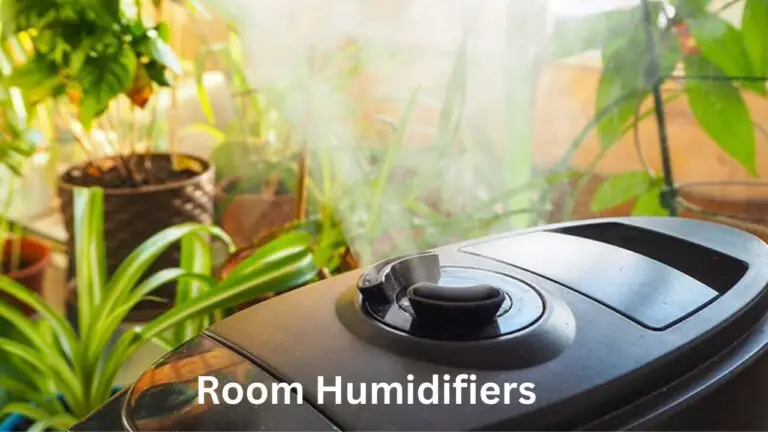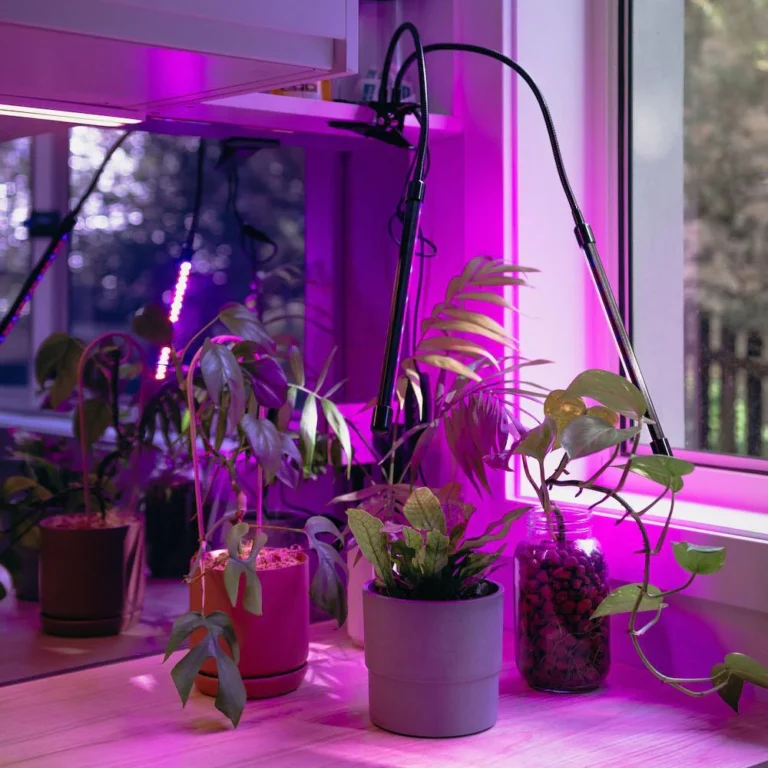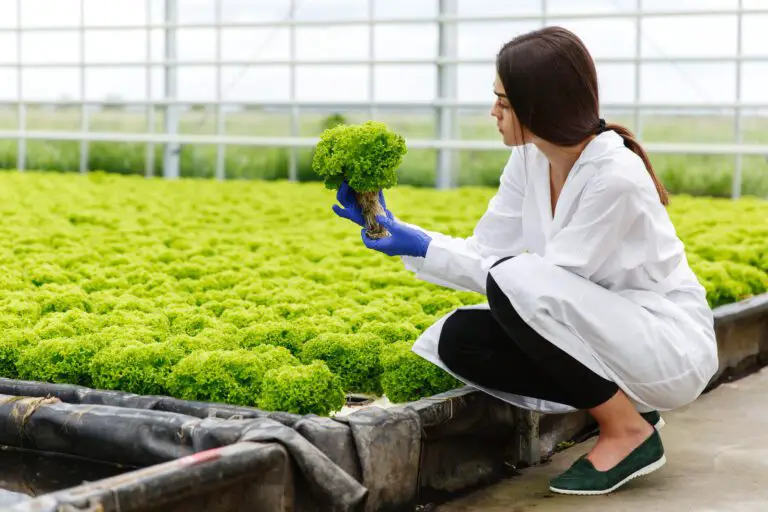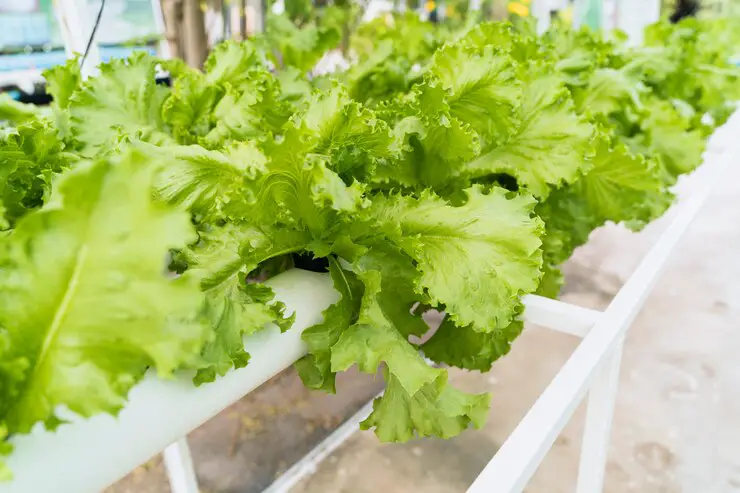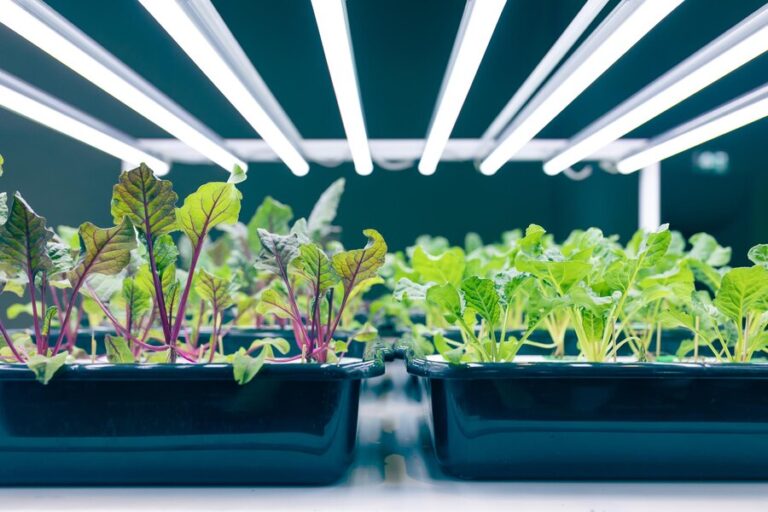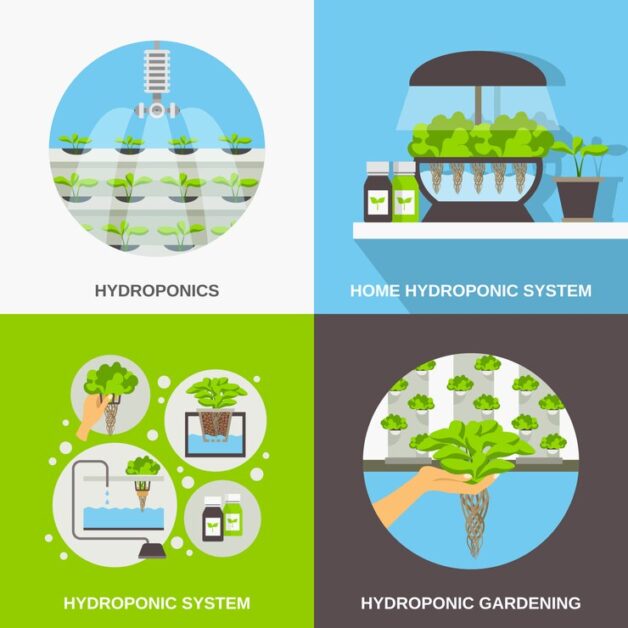How to Determine the Optimal Distance for Your Grow Light in Hydroponics
Table of Contents
Understanding the Importance of Light Distance in Hydroponics
The distance between a grow light and your plants is a crucial factor to consider when setting up a hydroponic system. Light distance plays a significant role in the growth and development of plants, as it directly affects the intensity and quality of light they receive. Understanding the importance of light distance is essential for ensuring optimal plant health and maximizing crop yield.
When determining the distance between your grow light and plants, it is important to consider factors such as the type of grow light used, the light intensity required by the specific plant species, and the stage of growth the plants are in. Different types of grow lights, such as LED, fluorescent, or high-intensity discharge (HID) lights, emit different amounts and types of light. This means that the distance between the light source and the plants will vary depending on the light fixture used. Additionally, the light needs of plants differ throughout their growth cycle, with seedlings and vegetative plants requiring lower light intensity compared to plants in the flowering and fruiting stage.
Maintaining the optimal light distance is crucial for preventing light burn, which occurs when plants are exposed to excessive light intensity. Light burn can have detrimental effects on plant health, including leaf discoloration, stunted growth, and even plant death. On the other hand, placing the grow light too far away from the plants can result in insufficient light reaching the lower leaves and branches, leading to poor growth and reduced yield. Finding the right balance between light intensity and distance is key to promoting healthy plant growth and maximizing both quality and quantity of crops in a hydroponic system.
• The distance between a grow light and plants is crucial for the growth and development of plants in hydroponics.
• Factors such as the type of grow light, light intensity required by specific plant species, and stage of plant growth should be considered when determining light distance.
• Different types of grow lights emit different amounts and types of light, requiring varying distances between the light source and plants.
• Light needs differ throughout the growth cycle, with seedlings and vegetative plants requiring lower light intensity compared to flowering and fruiting plants.
• Maintaining optimal light distance prevents light burn, which can have detrimental effects on plant health including leaf discoloration, stunted growth, and even death.
• Placing the grow lights too far away from plants can result in insufficient lighting reaching lower leaves and branches leading to poor growth and reduced yield.
• Finding the right balance between light intensity and distance is necessary for promoting healthy plant growth in hydroponic systems.
The Role of Light Intensity in Plant Growth and Development
Light intensity plays a crucial role in the growth and development of plants. It directly affects various processes such as photosynthesis, photomorphogenesis, and photoperiodism. When plants are exposed to appropriate light intensities, they are able to harness the energy from light and convert it into chemical energy, fueling their growth.
An optimal light intensity provides plants with the energy they need for photosynthesis, which is the process by which they convert light into carbohydrates. This energy is then utilized for various metabolic activities, such as the synthesis of proteins, enzymes, and other essential compounds. Insufficient light intensity can lead to reduced photosynthetic activity, resulting in stunted growth and poor development. On the other hand, excessive light intensity can cause photoinhibition, a process where the excess energy damages the photosynthetic machinery, leading to reduced growth and even cell death.
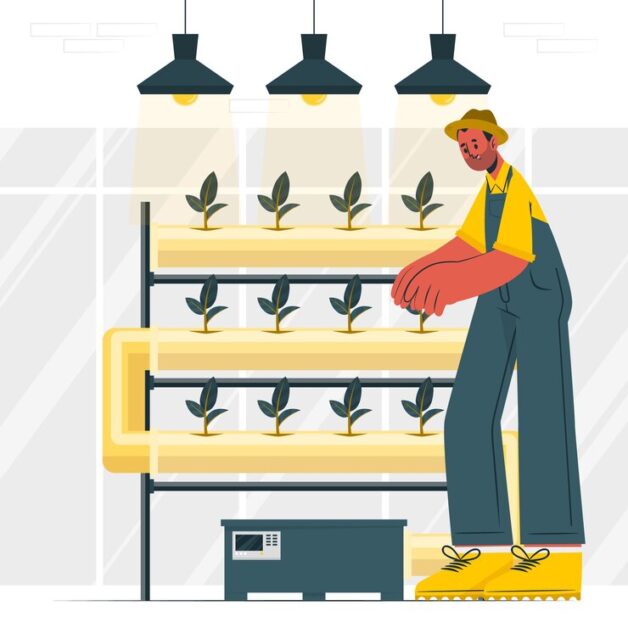
Finding the right balance of light intensity is key for maximizing the growth and development of plants. Different plant species have varying light intensity requirements, and it is crucial to understand the specific needs of each species. Providing the appropriate light intensity throughout the growth cycle, from seedling to maturity, can significantly impact the overall health, yield, and quality of the plants. In order to determine the optimal light intensity for a particular plant species, factors such as the plant’s natural habitat, growth stage, and light tolerance should be considered. By aligning the light intensity with the specific requirements of the plants, gardeners and hydroponic enthusiasts can create an ideal growing environment that promotes robust plant growth and development.
• Light intensity directly affects processes such as photosynthesis, photomorphogenesis, and photoperiodism in plants.
• Optimal light intensity provides the energy needed for photosynthesis and metabolic activities.
• Insufficient light intensity can lead to reduced photosynthetic activity and stunted growth.
• Excessive light intensity can cause photoinhibition and damage to the photosynthetic machinery.
• Finding the right balance of light intensity is crucial for maximizing plant growth and development.
• Different plant species have varying light intensity requirements that should be understood.
• Providing appropriate light intensity throughout the growth cycle impacts overall health, yield, and quality of plants.
• Factors like natural habitat, growth stage, and light tolerance should be considered when determining optimal light intensity.
• Aligning light intensity with specific plant requirements creates an ideal growing environment for robust growth.
Factors to Consider When Determining the Distance of Your Grow Light
Determining the optimal distance for your grow light is crucial for the success of your hydroponic garden. Several factors need to be taken into consideration to ensure that your plants receive the right amount of light for healthy growth and development.
Firstly, the type of plant species you are growing plays a significant role in determining the distance of your grow light. Different plants have varying light requirements, and it is essential to understand the specific needs of your crops. Some plants may thrive with higher light intensities, while others might require less light to avoid burning or stunted growth.
Another factor to consider is the stage of growth your plants are in. Seedlings and vegetative growth generally require less intense light and can be placed closer to the grow light. On the other hand, flowering and fruit development stages often demand higher light levels, which may necessitate adjusting the distance of your grow light accordingly.
When determining the ideal distance for your grow light, there are several factors to consider. Let’s create a table summarizing these key factors:
| Factor | Considerations |
|---|---|
| Plant Type | Different plants have varying light requirements. Some prefer high light intensity, while others thrive in lower light levels. For instance: |
- Foliage Plants (e.g., Ficus, Monstera, Philodendron): Optimal light levels vary, with some surviving at low light (around 3-4 Mol/m²/day) and others thriving at medium levels (10-15 Mol/m²/day). Sun-loving plants like fiddle leaf figs need even higher light (20-30 Mol/m²/day).
- Vegetables and Herbs: These typically require medium to high light conditions (15-20 Mol/m²/day).
- Flowering and Fruiting Edibles: Peppers and tomatoes need full sun conditions (20-30 Mol/m²/day). | Wattage | Higher wattage bulbs provide more plant-available light energy. Generally, higher wattage bulbs are placed further away, while lower wattage bulbs should be closer to the plants. | Beam Width | Some grow lights emit light in all directions, while others concentrate light using reflectors or optics. Lights with optics can be placed further away due to their higher intensity (PPFD) hitting the plant.
Remember that these guidelines are approximate, and individual plant needs may vary. Always refer to specific recommendations for your grow light and plant species.
By carefully assessing these factors and making appropriate adjustments, you can ensure that your plants receive the right amount of light at the optimal distance for their growth stage and species. This attention to detail will contribute to healthier, more vigorous plants and ultimately lead to a bountiful hydroponic harvest.
• Different plant species have varying light requirements
• Some plants thrive with higher light intensities, while others require less light to avoid burning or stunted growth
• The stage of growth your plants are in also affects the distance of your grow light
• Seedlings and vegetative growth generally require less intense light and can be placed closer to the grow light
• Flowering and fruit development stages often demand higher light levels, which may necessitate adjusting the distance of your grow light accordingly
Evaluating the Light Needs of Different Plant Species
Different plant species have varying light requirements, and it is important to understand these needs in order to provide optimal growing conditions. Evaluating the light needs of different plant species involves considering factors such as light intensity, duration, and spectrum.
Light intensity refers to the amount of light reaching the plant’s leaves, and it plays a crucial role in photosynthesis and plant growth. Some species, like sun-loving plants, thrive under high-intensity light, while others, such as shade-loving plants, prefer lower levels of light. By assessing the light intensity requirements of different plant species, gardeners can ensure that their plants receive the right amount of light for healthy growth and development.
In addition to light intensity, the duration of light exposure is another aspect to consider. Some plants require longer hours of light exposure, while others are adapted to thrive in shorter daylight periods. Understanding the specific light duration needs of different plant species can help gardeners establish appropriate lighting schedules and ensure the plants receive the necessary amount of light for optimal growth.
Furthermore, the light spectrum, composed of different wavelengths, plays a significant role in plant development. Blue light, for instance, is essential for vegetative growth, while red light promotes flowering and fruiting. By evaluating the light spectrum requirements of various plant species, gardeners can select or adjust their grow lights to provide the specific spectrum needed for each stage of plant growth.
Taking into account these factors allows gardeners to tailor their lighting setups to the specific needs of different plant species. This targeted approach ensures that the plants receive the appropriate light intensity, duration, and spectrum, facilitating healthy growth and maximizing crop yield. By carefully evaluating the light needs of different plant species, gardening enthusiasts can create ideal growing conditions and cultivate thriving plants.
• Light intensity is crucial for photosynthesis and plant growth
• Sun-loving plants thrive under high-intensity light
• Shade-loving plants prefer lower levels of light
• Assessing light intensity requirements ensures healthy growth and development
• Duration of light exposure varies among plant species
• Some require longer hours of light exposure, while others thrive in shorter periods
• Understanding specific duration needs helps establish appropriate lighting schedules
• The light spectrum plays a significant role in plant development
• Blue light promotes vegetative growth
• Red light stimulates flowering and fruiting
• Evaluating spectrum requirements allows for targeted grow lights
By considering these factors, gardeners can:
– Tailor lighting setups to the needs of different plant species
– Provide optimal conditions for healthy growth and maximum yield
The Impact of Light Spectrum on Plant Growth and Yield
The spectrum of light plays a crucial role in the growth and development of plants, influencing their overall productivity and yield. Different wavelengths of light have distinct effects on plant physiology, particularly during photosynthesis. In photosynthesis, plants convert light energy into chemical energy, which is used for growth, reproduction, and nutrient synthesis. Research has shown that the red and blue spectrums of light are especially crucial for plant photosynthesis and growth. Red light is essential for triggering the process of photosynthesis, enhancing the production of chlorophyll and other pigments necessary for plant development. On the other hand, blue light is crucial for regulating plant growth and morphology, promoting healthy leaf and root development. Additionally, blue light influences stomatal opening and closure, affecting gas exchange and water uptake in plants.
The balance of light spectrum in a grow light system can significantly impact plant growth and yield. Studies have highlighted the significance of providing plants with a well-rounded spectrum that adequately encompasses both red and blue light spectrums. This balanced spectrum ensures optimal photosynthesis, leading to healthier and more productive plants. It is worth noting that the ideal light spectrum requirements vary across different plant species and growth stages. For instance, leafy greens and vegetative plants generally benefit from higher proportions of blue light, while flowering and fruiting plants require increased red light exposure. Therefore, it is crucial for growers to consider the specific light requirements of their chosen plant species and adjust the light spectrum accordingly to maximize growth and yield potential.
• Red light triggers photosynthesis and enhances chlorophyll production
• Blue light regulates plant growth, morphology, and stomatal opening
• Balanced spectrum promotes optimal photosynthesis and healthier plants
• Light spectrum requirements vary across different plant species and growth stages
• Leafy greens and vegetative plants benefit from higher proportions of blue light
• Flowering and fruiting plants require increased red light exposure
• Growers should consider specific light requirements for maximum growth and yield potential
Assessing the Light Output of Your Grow Light System
Assessing the Light Output of Your Grow Light System
When it comes to assessing the light output of your grow light system, there are a few key factors to consider. One important aspect is the light intensity, which refers to the amount of light produced by the system. This can be measured using a light meter, which quantifies the amount of light falling on a specific area. It is essential to ensure that the light intensity matches the needs of your plants, as too little light can result in stunted growth, while too much light can lead to light burn and damage.
Another crucial factor to consider is the light spectrum emitted by your grow light system. Different plants have specific light spectrum requirements, and providing them with the right spectrum can significantly impact their growth and development. It is recommended to use a spectrometer to measure the light spectrum emitted by your grow light system. This tool can help you understand the wavelengths and intensity of light that your plants are receiving, allowing you to adjust your setup accordingly.
In addition to measuring light intensity and spectrum, it is also important to assess the overall coverage and uniformity of light provided by your grow light system. Uneven light distribution can result in uneven growth and lower yields. One way to evaluate coverage and uniformity is by using a light meter with a cosine-corrected sensor, which can measure the light from different angles and provide a more accurate representation of the overall light distribution. Regularly assessing the light output of your grow light system and making necessary adjustments will ensure that your plants receive the optimal light conditions for healthy growth and maximum yield.
Assessing the Light Output of Your Grow Light System
• One important aspect to consider is the light intensity, measured using a light meter
– Light intensity refers to the amount of light produced by the system
– Ensure that the light intensity matches your plants’ needs for optimal growth
• Too little light can result in stunted growth
• Too much light can lead to light burn and damage
• Another crucial factor is the light spectrum emitted by your grow light system
– Different plants have specific spectrum requirements for growth and development
– Use a spectrometer to measure the emitted spectrum and adjust accordingly
• Understand wavelengths and intensity received by your plants
• Assess overall coverage and uniformity of provided lighting
– Uneven distribution can result in uneven growth and lower yields
– Use a cosine-corrected sensor on a light meter for accurate representation
of overall distribution
Regularly assessing the output of your grow lights allows you to make necessary adjustments. By ensuring optimal conditions, you promote healthy plant growth and maximize yield.
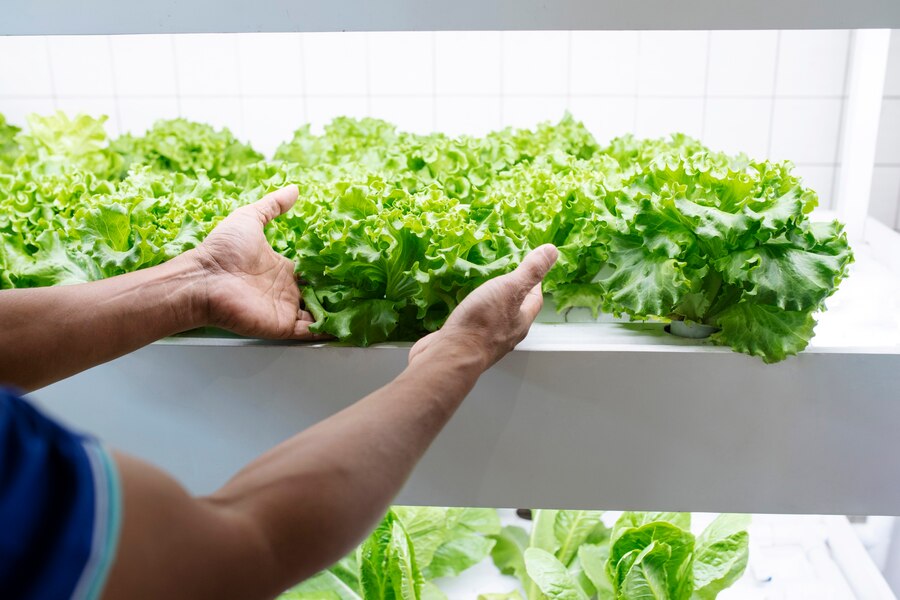
Measuring Light Intensity: Tools and Techniques
To accurately measure light intensity in your hydroponic setup, you will need to utilize the right tools and techniques. A light meter, also known as a lux meter or a PAR meter, is an essential tool for this purpose. This device measures the amount of light available to plants by detecting both visible light and important wavelengths that influence plant growth, such as photosynthetically active radiation (PAR). With a light meter, you can obtain precise readings and ensure that your plants are receiving the optimal light levels for their growth and development.
Another technique for measuring light intensity is using a spectroradiometer. This advanced tool not only measures the intensity of light but also provides detailed information about the light spectrum. It allows you to assess the specific wavelengths and their distribution, helping you understand how the light affects different plant responses. By analyzing the light spectrum, you can fine-tune your lighting system to match the specific requirements of various plant species and growth stages.
Both the light meter and spectroradiometer can provide valuable insights into your plant’s light needs. Regular monitoring of light intensity using these tools will help you make informed adjustments to optimize the lighting conditions in your hydroponic system. By ensuring that your plants receive the right amount and quality of light, you can promote healthy growth and maximize crop yield.
• A light meter, also known as a lux meter or PAR meter, is an essential tool for accurately measuring light intensity in a hydroponic setup.
• The light meter detects both visible light and important wavelengths that influence plant growth, such as photosynthetically active radiation (PAR).
• With a light meter, you can obtain precise readings and ensure that your plants are receiving the optimal light levels for their growth and development.
• Another technique for measuring light intensity is using a spectroradiometer.
• A spectroradiometer not only measures the intensity of light but also provides detailed information about the light spectrum.
• It allows you to assess the specific wavelengths and their distribution, helping you understand how the light affects different plant responses.
• By analyzing the light spectrum, you can fine-tune your lighting system to match the specific requirements of various plant species and growth stages.
• Regular monitoring of light intensity using these tools will help you make informed adjustments to optimize the lighting conditions in your hydroponic system.
• By ensuring that your plants receive the right amount and quality of light, you can promote healthy growth and maximize crop yield.
Determining the Optimal Distance for Seedling and Vegetative Growth
To ensure successful growth and development of seedlings and vegetative plants in a hydroponic system, it is crucial to determine the optimal distance for your grow lights. Light distance plays a significant role in the overall health and productivity of your plants, as it directly affects their photosynthetic capabilities.
When it comes to seedlings, providing the right amount of light is essential for proper germination and healthy establishment. As a general guideline, maintaining a distance of 18 to 24 inches between the grow lights and the top of the seedlings is recommended. This allows them to receive an adequate amount of light without being overwhelmed. It is important to monitor the seedlings closely and make adjustments to the light distance if you notice any signs of stress, such as wilting or stretching.
During the vegetative stage, plants require more intense light to promote vigorous growth and sturdy stems. As the plants grow taller, adjusting the light distance becomes necessary to ensure optimal light penetration and coverage. Typically, maintaining a distance of 12 to 18 inches between the grow lights and the top of the plants is optimal during this stage. However, it is crucial to regularly assess the plants and make necessary adjustments as their height can vary depending on the species and growth conditions.
Determining the optimal light distance for seedling and vegetative growth requires careful observation and understanding of the specific needs of your plants. By providing the right balance of light intensity and distance, you can create an ideal environment for their healthy development and maximize their growth potential.
• Maintaining a distance of 18 to 24 inches between the grow lights and seedlings is recommended for proper germination and establishment.
• Adjust the light distance if you notice signs of stress, such as wilting or stretching in seedlings.
• During the vegetative stage, plants require more intense light for vigorous growth and sturdy stems.
• Typically, a distance of 12 to 18 inches between grow lights and plants is optimal during this stage.
• Regularly assess plant height and make necessary adjustments to ensure optimal light penetration and coverage.
• Determining the optimal light distance requires careful observation and understanding of your specific plant’s needs.
Adjusting Light Distance for Flowering and Fruit Development
Adjusting the distance of your grow lights is crucial during the flowering and fruit development stage of plant growth. The right light distance will optimize the plants’ ability to produce abundant blossoms and fruits, ensuring a bountiful harvest.
During this stage, plants require higher light intensities to support optimal flower and fruit production. Increasing the light intensity can be achieved by lowering the grow lights closer to the plants. However, it is important to strike a balance as excessive light exposure can potentially lead to light burn and damage the delicate flowers and fruits. Regularly monitoring the plants’ response to light intensity and making necessary adjustments is key in achieving the best results.
Remember that each plant species has specific light requirements, and it is essential to understand the light needs of the particular plants you are cultivating. Researching and consulting reputable sources or experts can help guide you in determining the optimal light distance for flowering and fruit development. By understanding the specific light requirements of your plants and fine-tuning the light distance accordingly, you can ensure healthy growth, abundant blooms, and a fruitful yield.
• Adjusting the distance of grow lights is crucial for flowering and fruit development.
• The right light distance optimizes plant’s ability to produce abundant blossoms and fruits.
• Plants require higher light intensities during this stage for optimal flower and fruit production.
• Increasing light intensity can be achieved by lowering the grow lights closer to the plants.
• Excessive light exposure can potentially lead to light burn and damage delicate flowers and fruits.
• Regularly monitoring plants’ response to light intensity is important for making necessary adjustments.
• Each plant species has specific light requirements, so it’s essential to understand your plants’ needs.
• Researching and consulting reputable sources or experts can help determine optimal light distance.
• Fine-tuning the light distance according to specific requirements ensures healthy growth, abundant blooms, and a fruitful yield.
Preventing Light Burn: How to Avoid Excessive Light Exposure
Excessive light exposure can have detrimental effects on the health and growth of your plants. Light burn, also known as photodamage, occurs when plants are exposed to high levels of light intensity for a prolonged period. This can lead to a range of issues such as burning of the leaves, stunted growth, and reduced overall productivity.
To prevent light burn, it is crucial to carefully manage the distance between your grow light and the plants. Each plant species has specific light requirements, and understanding these needs is essential for optimal growth. A general guideline is to start with a higher distance between the light source and the plants, gradually decreasing it as they grow. However, it is important to constantly monitor the plants’ response and make adjustments accordingly.
• Regularly check the plants for any signs of light burn, such as yellowing or browning of the leaves.
• Consider using a light meter to measure the intensity of light reaching your plants and ensure it falls within the recommended range for their specific needs.
• Avoid placing grow lights too close to delicate or sensitive plants, as they may be more prone to light burn.
• Provide shade or use reflective materials around your grow area to help diffuse and distribute the light evenly, reducing the risk of concentrated exposure in certain areas.
• Implement a proper lighting schedule that mimics natural sunlight patterns. This includes providing periods of darkness for your plants to rest and recover from light exposure.
• If using artificial lighting systems, choose high-quality bulbs that emit a balanced spectrum of light. Some bulbs may produce excessive heat along with intense light, increasing the chances of photodamage.
• Consider rotating your plants periodically so that different parts receive equal amounts of light exposure. This can help prevent uneven growth and minimize the risk of localized damage.
The Effect of Light Distance on Plant Morphology and Structure
The distance at which light is placed from plants in hydroponic systems plays a crucial role in shaping their morphology and structure. Understanding this effect is essential for ensuring optimal growth and development of plants.
When the light source is placed too far away from the plants, they may exhibit excessive stem elongation, known as etiolation. This elongation occurs as plants stretch towards the light in an attempt to increase their light capture. Consequently, the stem becomes thinner and weaker, compromising the plant’s overall structural integrity. Etiolation not only affects the appearance of plants but also hinders their ability to support heavy fruits or flowers. Therefore, maintaining an appropriate distance between the light source and plants is crucial to promoting sturdy stems and overall healthy plant architecture.
• Placing the light source too close to the plants can also have negative effects on their morphology and structure. When exposed to intense light at a close distance, plants may experience leaf burn or scorching. This occurs when the leaves are unable to dissipate excess heat generated by the high-intensity light, resulting in tissue damage. Leaf burn not only affects the aesthetic appeal of plants but can also impair their ability to carry out photosynthesis effectively.
• In addition to stem elongation and leaf burn, inadequate light distance can lead to uneven distribution of light within the plant canopy. When lights are placed too far apart or at improper angles, some areas of the plant may receive more light than others. This creates shading within the canopy, causing certain parts of the plant to receive insufficient light for optimal growth. Uneven distribution of light can result in stunted growth, lower yields, and reduced overall quality of crops.
• Properly managing light distance is particularly important for indoor hydroponic systems where natural sunlight is limited or absent altogether. Growers must carefully consider factors such as plant species, growth stage, and desired outcomes when determining an appropriate distance between plants and artificial lighting sources.
• The use of reflective surfaces or materials around plants can help optimize light distribution by redirecting stray photons towards shaded areas within the canopy. Reflective walls or panels positioned strategically around growing spaces bounce back a portion of incoming radiation onto lower leaves that would otherwise be deprived of sufficient illumination.
• Regular monitoring and adjustment of lighting distances based on plant response is necessary for maintaining optimal growth conditions throughout different stages of development. As plants grow taller or wider over time, adjusting lighting heights accordingly ensures consistent coverage across all parts of each individual plant.
In conclusion,
the effect of light distance on plant morphology and structure cannot be underestimated in hydroponic systems.
Proper management requires finding a balance between providing enough intensity without causing harm.
By understanding how different distances affect plant growth, growers can optimize their cultivation practices and achieve healthy, robust plants with desirable architecture.
The Role of Light Penetration in Dense Canopy Growth
When it comes to dense canopy growth in hydroponics, light penetration plays a crucial role in determining the overall health and productivity of your plants. Dense canopies can develop when plants are provided with optimal lighting conditions, allowing for efficient photosynthesis throughout the entire plant structure.
In a dense canopy, the upper leaves may intercept a significant amount of light, preventing it from reaching the lower leaves and stems. Insufficient light penetration can lead to decreased growth rates, elongation of stems, and an overall decline in plant vigor. This is because without proper light penetration, the lower parts of the plants receive less energy for photosynthesis, resulting in reduced carbohydrate production and nutrient transportation.
To maximize light penetration in a dense canopy, it is essential to ensure uniform distribution of light throughout the plant structure. This can be achieved by strategically placing grow lights at appropriate distances and angles, as well as by utilizing light reflectors and diffusers to redirect and scatter light. By optimizing light penetration, you can promote even growth, minimize shading effects, and maximize the overall productivity of your hydroponic system.
• Dense canopies in hydroponics require optimal light penetration for healthy and productive plant growth.
• Insufficient light penetration leads to decreased growth rates, elongated stems, and overall decline in plant vigor.
• Lower parts of plants receive less energy for photosynthesis without proper light penetration, resulting in reduced carbohydrate production and nutrient transportation.
• Maximize light penetration by ensuring uniform distribution throughout the plant structure.
• Strategically place grow lights at appropriate distances and angles to optimize light coverage.
• Utilize reflectors and diffusers to redirect and scatter light for maximum efficiency.
• By optimizing light penetration, you can promote even growth, minimize shading effects, and maximize productivity in your hydroponic system.
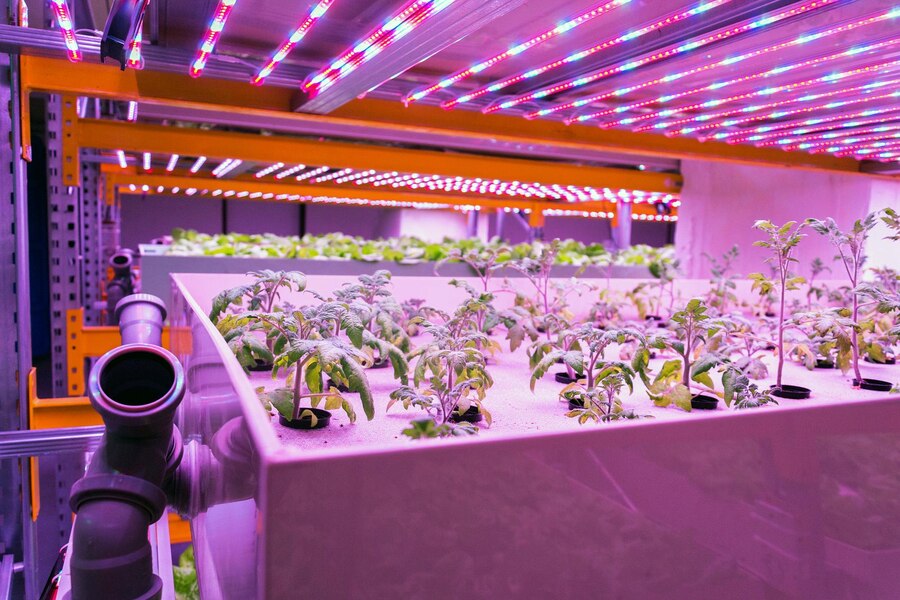
Evaluating and Adjusting Light Distance for Optimal Plant Health
Understanding the optimal distance for grow lights is crucial for maintaining optimal plant health in hydroponics systems. Evaluating and adjusting light distance plays a pivotal role in maximizing plant growth and ensuring a successful harvest.
To evaluate the light distance, it is essential to consider factors such as light intensity, light spectrum, and plant species. Different plants have varying light requirements, and their growth and development can be significantly influenced by the distance of the light source. By assessing the specific light needs of different plant species, growers can make informed decisions regarding the distance between the plants and the grow lights. This evaluation process helps in achieving the ideal lighting conditions for each crop, optimizing photosynthesis, and promoting healthy growth.
Adjusting light distance is equally important throughout the growth cycle. During the seedling and vegetative stage, a closer distance between the plants and the lights can encourage strong root development and promote compact, robust growth. However, as plants transition to the flowering and fruiting stage, adjusting the light distance becomes vital to prevent light burn and excessive heat. By maintaining an appropriate distance during flowering and fruit development, growers can ensure optimal light penetration while avoiding any potential damage to the plants.
In conclusion, evaluating and adjusting light distance is a crucial aspect of achieving optimal plant health in hydroponics systems. By understanding the specific light requirements of different plant species and adjusting the distance accordingly, growers can provide the ideal lighting conditions for maximum crop yield. Regular monitoring and adjustment throughout the growth cycle will help maintain healthy growth, prevent light burn, and promote overall plant vitality.
• Different plants have varying light requirements
• Light distance influences plant growth and development
• Evaluating specific light needs helps achieve ideal lighting conditions
• Adjusting light distance promotes strong root development in seedlings
• Closer distance during vegetative stage encourages robust growth
• Adjusting distance prevents light burn and excessive heat during flowering and fruiting stage
• Regular monitoring and adjustment maintains healthy growth
• Optimal light penetration is achieved while avoiding potential damage to plants.
Monitoring and Adjusting Light Distance Throughout the Growth Cycle
Monitoring and adjusting the distance of your grow lights throughout the growth cycle is essential for ensuring optimal plant health and maximizing crop yield. As plants mature and their light requirements change, it is crucial to regularly assess and modify the distance between the light source and the plants to maintain an ideal light environment.
During the seedling and vegetative growth stages, it is important to position the lights at an appropriate distance to promote healthy and vigorous growth. As a general guideline, the distance should be relatively close, typically between 18 to 24 inches, to provide sufficient light intensity for photosynthesis. However, it is crucial to monitor the plants closely and adjust the distance if any signs of light stress, such as leaf discoloration or stunted growth, occur. By gradually increasing the distance as the plants grow, you can prevent light burn and ensure even light distribution across the canopy.
As the plants transition into the flowering and fruiting stages, their light requirements change. It is crucial to adjust the distance of the grow lights to ensure the right balance of light intensity and coverage. For flowering plants, such as tomatoes or roses, it is generally recommended to increase the distance between the lights and the canopy to enhance light penetration and promote dense bud formation. On the other hand, fruiting plants like peppers or strawberries may benefit from slightly closer lights to ensure adequate light intensity for proper fruit development. Regular monitoring and adjustment of light distance throughout the growth cycle is essential to cater to the changing needs of your plants and optimize their overall health and productivity.
• During the seedling and vegetative growth stages, position lights between 18 to 24 inches for optimal light intensity
• Monitor plants closely for signs of light stress and adjust distance accordingly
• Gradually increase distance as plants grow to prevent light burn and ensure even distribution of light across canopy
• In flowering and fruiting stages, adjust distance to balance light intensity and coverage
• Increase distance for flowering plants to enhance light penetration and promote dense bud formation
• For fruiting plants, consider slightly closer lights to ensure adequate light intensity for proper fruit development
• Regular monitoring and adjustment of light distance is crucial throughout the growth cycle
When it comes to monitoring and adjusting light distance for your plants throughout their growth cycle, it’s essential to consider several factors. Let’s create a table summarizing these key considerations:
| Factor | Considerations |
|---|---|
| Plant Growth Stage | Different growth stages have varying light requirements. Adjust the light distance based on the following: |
- Seedlings and Clones: Keep the light closer (around 12-24 inches) to encourage strong growth.
- Vegetative Stage: Maintain moderate distance (18-30 inches) to promote leafy growth.
- Flowering Stage: Increase the distance (24-36 inches) to prevent light burn and encourage bud development. | Light Intensity (PPFD) | Measure the photosynthetic photon flux density (PPFD) using a light meter. Adjust the distance to achieve the desired PPFD for your specific plant species. | Light Spectrum | Different wavelengths affect plant growth differently. For example:
- Blue Light (400-500 nm): Promotes vegetative growth.
- Red Light (600-700 nm): Enhances flowering and fruiting.
- Full Spectrum: Mimics natural sunlight and is suitable for overall growth. | Heat Dissipation | Ensure the grow light doesn’t generate excessive heat. If it does, increase the distance to prevent heat stress. | Canopy Coverage | Position the light to evenly cover the entire plant canopy. Adjust as the plant grows. | Manufacturer Recommendations | Refer to the grow light manufacturer’s guidelines for optimal distance based on wattage, spectrum, and plant type.
Remember that these guidelines are approximate, and individual plant needs may vary. Regularly monitor your plants and adjust the light distance as needed to ensure healthy growth and maximize yield.
Considerations for Vertical Farming Systems and Multi-Layered Setups
Vertical farming systems and multi-layered setups have revolutionized the way we cultivate plants indoors. These innovative systems offer a plethora of benefits, including increased crop yield, maximized space utilization, and enhanced efficiency. However, when it comes to optimizing light distance in such setups, there are several key considerations to keep in mind.
Firstly, the height and arrangement of plants within a vertical farming system or multi-layered setup can greatly impact light distribution. As the distance between plants increases vertically, it becomes crucial to ensure that each plant receives an adequate amount of light. This can be achieved by strategically positioning grow lights at appropriate heights or by utilizing adjustable lighting systems that can cater to the varying needs of plants at different levels.
Another important consideration is the type of crops being grown. Different plant species have varying light requirements, with some preferring higher light intensities while others thrive in lower levels. When designing a vertical farming system or multi-layered setup, it is important to consider the light preferences of each crop and adjust the light distance accordingly. This ensures that all plants within the system receive the optimal light they need for healthy growth and development.
In conclusion, while vertical farming systems and multi-layered setups offer numerous advantages, optimizing light distance is a critical aspect of their success. By carefully considering the height and arrangement of plants and understanding the light preferences of different crops, growers can ensure that their plants receive the ideal amount of light for optimal growth and yield.
• The height and arrangement of plants within a vertical farming system or multi-layered setup can greatly impact light distribution.
• Strategically positioning grow lights at appropriate heights or utilizing adjustable lighting systems can ensure each plant receives an adequate amount of light.
• Different plant species have varying light requirements, so it is important to consider the light preferences of each crop when designing the system.
• Adjusting the light distance accordingly ensures that all plants receive the optimal light they need for healthy growth and development.
Troubleshooting Light Distance Issues in Hydroponics
One common issue that hydroponic gardeners may encounter is incorrect light distance. Getting the right distance between your grow light and your plants is crucial for their overall health and growth. If the light is too far away, the plants may not receive sufficient light intensity, leading to weak and spindly growth. On the other hand, if the light is too close, it can result in light burn, causing damage to the leaves and inhibiting proper growth.
To troubleshoot light distance issues, it is important to consider the specific needs of your plants. Different plant species have different light requirements, and understanding their preferences can help you determine the optimal light distance. Factors such as the growth stage of the plants, the intensity and spectrum of the light, and the size of your growing space should also be taken into account.
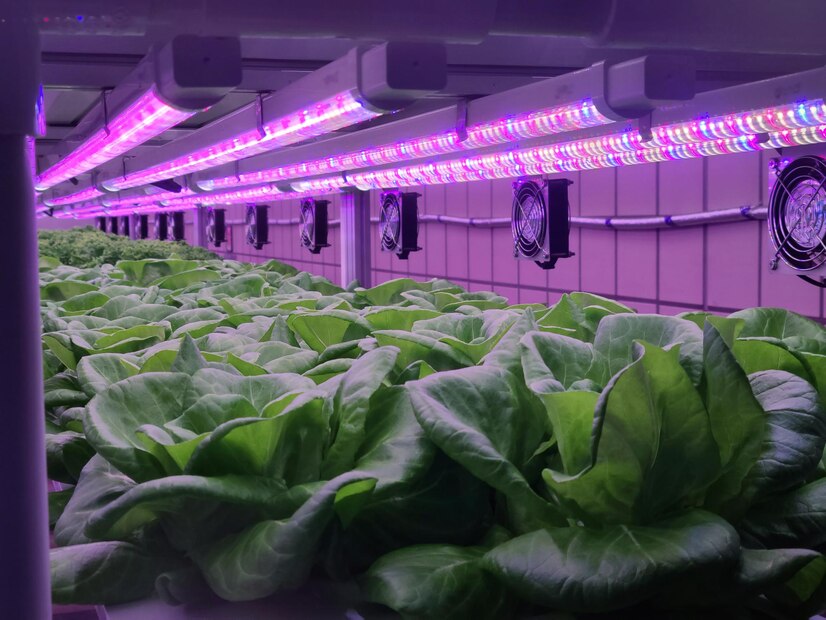
There are various tools and techniques available to measure light intensity accurately. A light meter, also known as a lux or foot-candle meter, can provide precise measurements and help you determine whether the light intensity is within the desired range. Additionally, you can observe your plants closely to assess any signs of light stress or deficiency, such as stunted growth, pale leaves, or leaf curling.
In the next section, we will explore the steps you can take to determine the optimal distance for different growth stages, from seedling and vegetative growth to flowering and fruit development. By understanding the importance of light distance and adjusting it accordingly, you can ensure healthy plant growth and maximize your hydroponic garden’s productivity.
• Use a light meter to accurately measure light intensity
• Observe plants for signs of light stress or deficiency
• Consider the specific needs of your plant species
• Take into account the growth stage, intensity and spectrum of the light, and size of your growing space
• Adjust light distance accordingly for different growth stages
• Optimal distance may vary from seedling and vegetative growth to flowering and fruit development
Optimizing Light Distance for Maximum Crop
Light distance plays a crucial role in optimizing crop yields in hydroponics. By understanding and adjusting the distance between the grow lights and the plants, gardeners can achieve maximum productivity and ensure healthy plant growth. When it comes to optimizing light distance for maximum crop production, there are several key factors to consider.
Firstly, the stage of plant growth should be taken into account. During the seedling and vegetative growth stages, closer proximity to the light source is necessary to encourage strong and vigorous growth. As the plants transition into the flowering and fruit development stage, increasing the distance between the lights and the canopy promotes better airflow and prevents excessive heat and light stress. Finding the optimal distance for each growth stage is essential in order to support the specific needs of the plants and maximize their potential.
Another important factor to consider is the type of plant species being cultivated. Different plants have varying light requirements, and understanding these variances can greatly influence the light distance optimization process. Some plant species thrive under high-intensity light and can be placed closer to the light source, while others prefer lower light intensity and require a greater distance. By evaluating the light needs of different plant species, gardeners can tailor their light distance adjustments to meet the specific requirements of their crops, resulting in optimized growth and enhanced crop yields.
In summary, optimizing light distance is an essential aspect of maximizing crop production in hydroponics. By considering the growth stage of the plants and the specific light requirements of the crop species, gardeners can make informed decisions regarding the distance between the grow lights and the plants. This thoughtful approach ensures that plants receive the optimal amount of light necessary for their growth and development, ultimately leading to higher yields and healthier plants.
• During the seedling and vegetative growth stages, closer proximity to the light source is necessary for strong and vigorous growth.
• Increasing the distance between lights and canopy during flowering and fruit development promotes better airflow and prevents excessive heat and light stress.
• Optimal light distance varies for different plant species based on their specific light requirements.
• Some plants thrive under high-intensity light and can be placed closer to the light source, while others prefer lower intensity and require a greater distance.
• Evaluating the light needs of different plant species allows gardeners to tailor their adjustments in light distance accordingly.
• Optimizing light distance ensures plants receive the optimal amount of light necessary for growth, leading to higher yields.
Please do watch video!
What is the ideal light distance for maximum crop yield in hydroponics?
The ideal light distance can vary depending on factors such as plant species and growth stage. It is important to consider the specific light requirements of your plants and adjust the distance accordingly.
How does light intensity affect plant growth and development?
Light intensity plays a crucial role in plant growth and development. Adequate light intensity is necessary for photosynthesis, which is essential for the production of energy and plant growth. Insufficient light intensity can lead to weak and leggy plants.
What factors should I consider when determining the distance of my grow light?
When determining the distance of your grow light, factors such as light intensity, plant species, growth stage, and the light output of your grow light system should be taken into consideration.
How does light spectrum affect plant growth and yield?
Light spectrum, or the specific wavelengths of light emitted by a grow light, can influence plant growth and yield. Different plant species respond differently to various light spectrums, so it is important to choose the right spectrum for optimal results.
How can I measure light intensity in my hydroponic setup?
Light intensity can be measured using tools such as a light meter or a lux meter. These devices provide readings of the amount of light reaching the plants and can help in determining the optimal light distance.
What is the optimal light distance for seedling and vegetative growth?
The optimal light distance for seedling and vegetative growth depends on the specific plant species and the light output of your grow light system. Generally, a distance of 12-24 inches is recommended for seedlings and young plants.
How should I adjust the light distance for flowering and fruit development?
During flowering and fruit development, it is generally recommended to decrease the light distance slightly to ensure adequate light penetration. However, the exact distance may vary depending on the specific plant species and the intensity of your grow light.
How can I prevent light burn in my plants?
Excessive light exposure can lead to light burn in plants, causing leaf damage and stunted growth. To prevent light burn, it is important to monitor and adjust the light distance accordingly, ensuring that the intensity of light is not too high for the plants.
How does light distance impact plant morphology and structure?
Light distance can have a significant impact on plant morphology and structure. Plants grown closer to the light source may have shorter internodal spacing and denser foliage, while plants grown further away may have elongated stems and larger leaf surface areas.
What should be considered when using vertical farming systems or multi-layered setups?
In vertical farming systems or multi-layered setups, it is important to consider the light distribution and penetration throughout the layers. Adjustments in light distance may be necessary to ensure that all plants receive adequate light for optimal growth.
How can I troubleshoot light distance issues in hydroponics?
If you are experiencing issues with light distance in your hydroponics setup, consider factors such as light intensity, light spectrum, and the specific needs of your plants. Adjustments can be made by either increasing or decreasing the light distance to address any issues.
How important is monitoring and adjusting light distance throughout the growth cycle?
Monitoring and adjusting light distance throughout the growth cycle is essential for maintaining optimal plant health and maximizing crop yield. Different growth stages may require different light distances, so regular monitoring and adjustments are crucial.
What are some considerations for optimizing light distance in vertical farming systems and multi-layered setups?
In vertical farming systems and multi-layered setups, it is important to ensure even light distribution across all layers. Adjustments in light distance may be necessary to account for the increased number of plants and layers, ensuring that all plants receive sufficient light for growth.
What are some techniques for measuring and adjusting light intensity in a hydroponic system?
Light intensity can be measured using tools such as a light meter or a lux meter. To adjust light intensity, you can either increase or decrease the light distance, or adjust the intensity of the grow light if it is adjustable.
How does light penetration impact dense canopy growth?
Light penetration is crucial for dense canopy growth as it ensures that light reaches the lower parts of the plant. Insufficient light penetration can result in weak and unproductive lower foliage. Adjusting light distance can help improve light penetration and promote healthier canopy growth.
How can I evaluate and adjust light distance for optimal plant health?
Evaluating light distance involves observing the plant’s response to the current distance and making adjustments accordingly. If plants appear stretched or have pale leaves, it may indicate that the light distance should be decreased. Conversely, if plants have compact growth or show signs of light burn, increasing the distance may be necessary.
Why is it important to optimize light distance for maximum crop yield?
Optimizing light distance is essential for maximum crop yield as it ensures that plants receive the right amount and quality of light. An incorrect light distance can lead to reduced growth, poor yields, or even plant damage. By optimizing light distance, you can enhance plant health, growth, and ultimately, crop productivity.

Nicole Burke is a dynamic writer at SouthElMonteHydroponics, fueled by her passion for horticulture and environmental sustainability. Armed with a degree in Environmental Science from a renowned institution, Nicole’s expertise lies in hydroponic gardening, organic farming, and biodiversity conservation. Her insatiable curiosity and love for nature drive her to explore innovative techniques in hydroponics, seeking to revolutionize the way we grow crops in urban environments. Nicole’s writing reflects her deep commitment to promoting eco-conscious practices and fostering a deeper connection between humans and the natural world. Through her engaging storytelling, she inspires others to embrace sustainable living and harness the power of hydroponics for a greener future.

